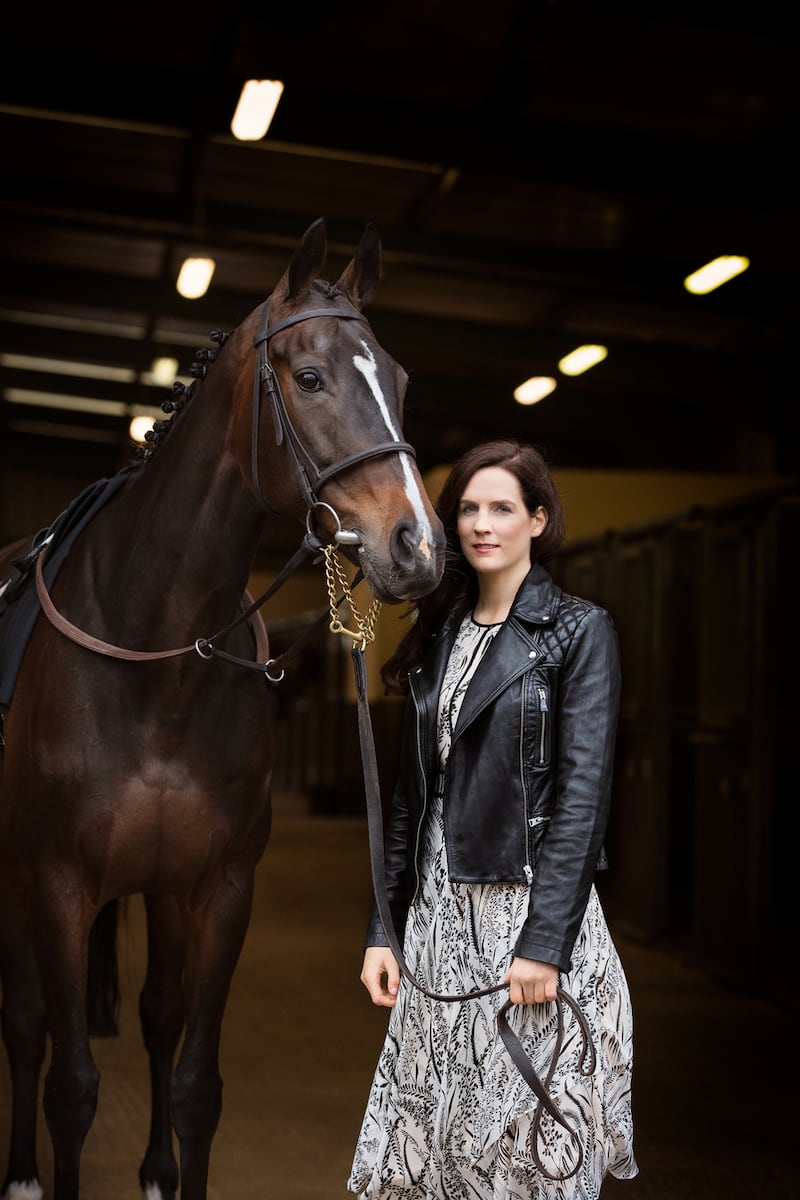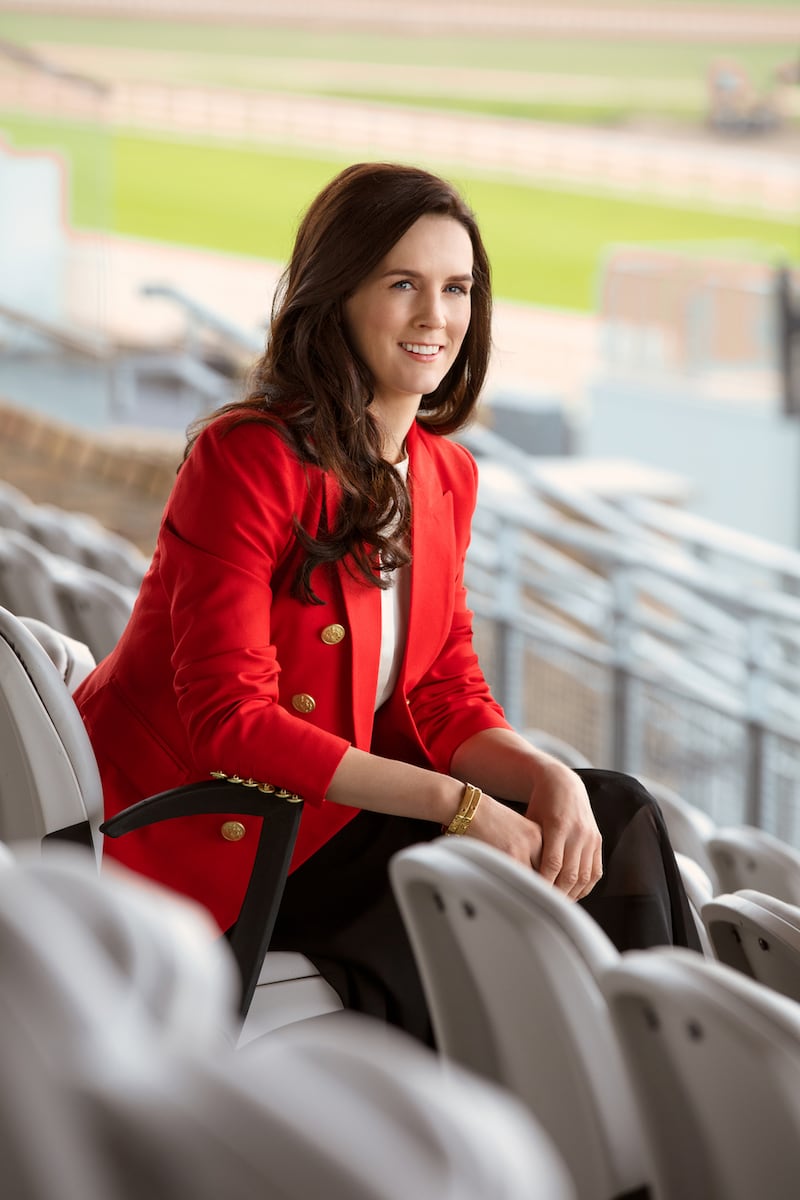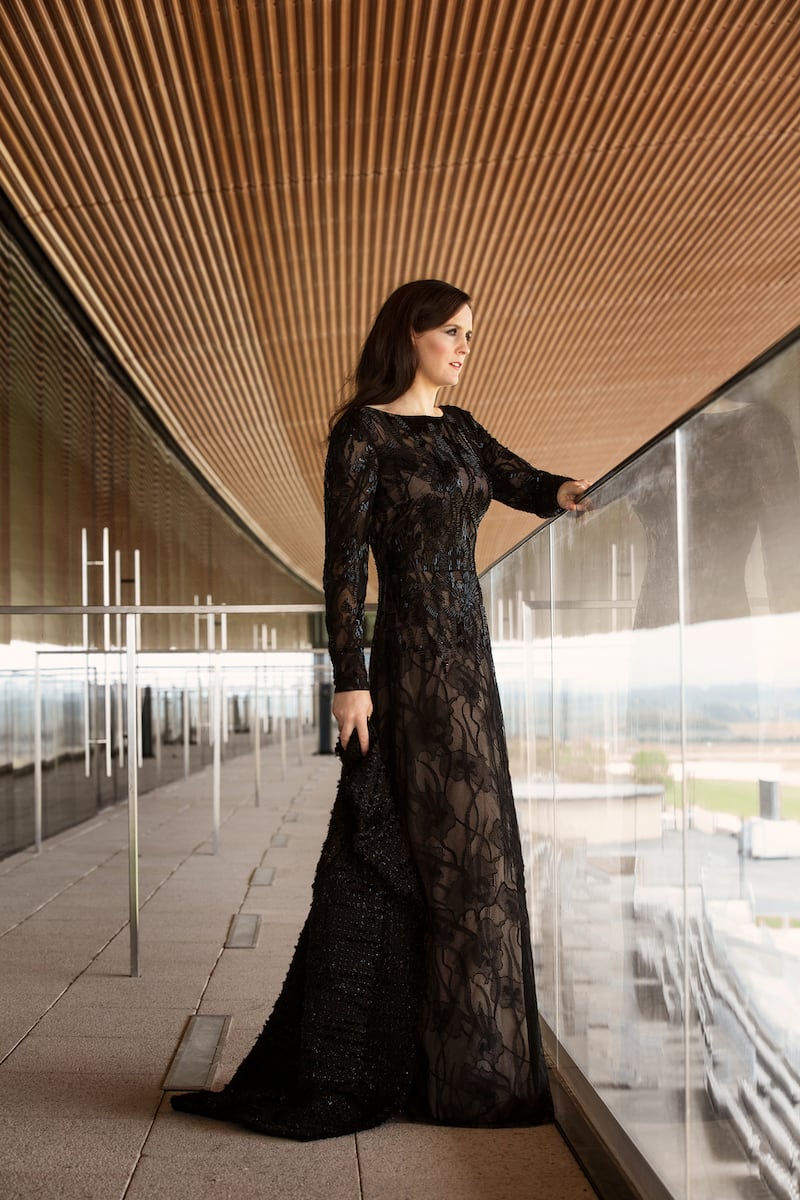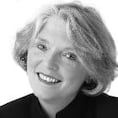In the world of Irish horse racing, Rachael Blackmore is a superstar. The 29-year-old jockey from Killenaule, in Co Tipperary, has ridden an astonishing 90 winners, including her first Cheltenham festival win, in March, astride a horse called A Plus Tard. “It is what every jockey dreams about,” she said at the time, exhausted, mud spattered but exhilarated. This is a woman who likes winning.
Considered a mould breaker in racing circles, she turned professional in 2015 (the first woman to do so since Maria Cullen in the 1980s), and made history as the first woman to win the Conditional Riders Championship, in 2017. In another trailblazing achievement, she also clocked up the most wins for a woman jockey ever in these islands in one season, as well as coming second only to Paul Townend in the recent National Hunt season as champion jockey (a jockey who has ridden the most wins in any season).
We meet at the Curragh racecourse, in Co Kildare, which has just reopened after a €17 million redevelopment, housing world-class facilities to match world-class racing. With its soaring copper-coloured horizontal roof overlooking the racetrack, the new grandstand, designed by celebrated UK architects Grimshaw, makes a spectacular silhouette on the landscape, looming over one of Europe’s oldest natural grasslands. Even the famous Queen’s Room, a familiar landmark built originally in 1853, has been rebuilt and repositioned as a standalone feature at the racetrack. There are stunning views from every area.
One of the photographic team inquires about injuries, which she shrugs off nonchalantly, mentioning 'just a broken nose, collarbone and wrist – not much'
Against this background, Blackmore, a slight, unassuming sports star, takes her stand in another capacity entirely, modelling a series of fashion outfits from Kildare Village, as the outlet's new sports ambassador, instead of togged out in her regular uniform of breeches, boots, helmet and colours. She addresses the task with impressive sangfroid and professionalism. One of the photographic team inquires about injuries, which she shrugs off nonchalantly, mentioning “just a broken nose, collarbone and wrist – not much”. With her fitness and slim build, everything she wears looks good on her. And being 57kg (9 stone), light for a jump jockey, she has no issues with weight. “Flat jockeys have a tougher time,” she says with a smile.
When I quiz her later again about the dangers of her profession, her reply is straightforward. “I don’t think about injury. If you start thinking about what could go wrong, it is not the job for you,” she says, although she does mention Robbie McNamara, the Cheltenham festival winning rider, who now uses a wheelchair, and is very aware of the injuries that can take their toll on riders and horses (seven horses died at Cheltenham last year). She also refers to the former jockey Joseph O’Brien. “He is now training and says he gets more enjoyment from training than riding, and that tells you something about working day to day. The jockey just rocks up for the glory of the day a lot of the time.”

The daughter of a dairy farmer and a teacher, Blackmore was not reared in a racing family like many other jockeys. One of three children – her younger sister is a lawyer and her older brother a graphic designer – she initially wanted to train as a vet, but ended up studying equine science in Limerick. “I always wanted to be an amateur jockey and ride in races, but I never envisaged the professional jockey route. It was not a career I thought would work out for me,” she says.
“I grew up on a farm and always had ponies and did a lot of pony clubs, hunts and races, and had my first win at 13 at a pony race in Cork beating Paul Townend,” a memory that still thrills, as she has referred to it several times in interviews.
Her big break was in 2011, when she partnered Stowaway Pearl on her first winner at the Tipperary Ladies’ Handicap Hurdle in Thurles for trainer Shark Hannon, recommended by champion jockey Davy Russell. Since then, having ridden so many of the great horses, “and those that have provided me with my best days”, the one she remembers the most was her childhood 12.2 hand pony Bubbles. “Horses are like people – they all have different characters and traits, and it’s nice when they are happy to walk for you and are not agitated or upset. Horses get anxious, and a lot do know what winning is. They just walk a bit prouder. They are extremely intelligent, and they love racing. A win is mostly to do with the horse, nine times out of 10. The best horses win the race. If you are fortunate enough as a jockey to get on these horses, that is half the battle,” she says. “And when you get your leg over your horse in the parade ring, you are in the zone”.



A successful UK female jockey, Bryony Frost, once memorably described the relationship between rider and horse in a big race. “You are at one with your horse and you are asking him to be brave. He’s asking you to be brave. You have to find the connection there. And when he’s giving you everything and you’re giving him everything, there is no better feeling,” she told the Daily Telegraph. Bear in mind that speeds of 55km/h are normal in National Hunt racing, and horses weigh about 500kg each, which gives some sense of the impact and peril of a fall.
A recent documentary called Jump Girls, made by Luke McManus about Irish female jockeys, highlighted women like Blackmore who have made their name in what is often described as a cutthroat, brutal and dangerous sport. Blackmore comes over as exceptional, having earned the trust of several high-profile trainers and owners in one of the very few sports where both men and women compete on equal terms. At one point in the documentary, trainer Ted Walsh, father of jockeys Katie and the now retired Ruby, spoke bluntly about the differences: “Women are stronger people than men mentally. Men arse lick a bit and women don’t. The real strong women say, ‘go f*** yourself’”.
Rachael continuously climbed out of her cot even well before her first birthday. We knew she was going to have an adventurous disposition, to say the least
Blackmore’s mother, Eimir, remembers her daughter’s early indication of character. “She continuously climbed out of her cot even well before her first birthday. We knew she was going to have an adventurous disposition, to say the least. I had an awful job keeping her in the cot. And we knew she was competitive – Charles [Eimir’s husband] taught her how to ride and negotiate obstacles, and at a very young age she wanted to jump everything Jonathan [Blackmore’s brother] jumped.” At the RDS Pony Club Games Championships, when Rachael was on the winning Tipperary Pony Club team, Eimir remembers her daughter being described as “the best boy on the team”.
Though the Blackmores are incredibly proud of their daughter’s achievements, one thing still rankles with Eimir. “It’s what she [Rachael] won’t tell you,” she confides. “When she graduated in equine science in UL, she graduated in absentia because there was a race that day and she wanted to ride, much to the chagrin of her mother. So my mantelpiece is bereft,” she says ruefully.
She also points out how tough and demanding it is being a jockey, and how difficult it is for young jockeys to get the rides and make a name for themselves, and how Rachael had over 600 rides last year. In the racing profession, every jockey receives a €130 riding fee for turning up for a race, and the race money is divided amongst the winners with trainers and jockeys receiving a small percentage. “You are only as good as your last ride,” says Eimir.
Blackmore works hard at training, and on a typical day rides out in the morning, races in the afternoon and also goes to the gym for conditioning and strength.



She is now sport ambassador for Kildare Village, attracted by the fact that the shopping outlet sponsors the 20x20 Campaign to promote more women in sport. “I like shopping, but I have to be in the right form and mood. I don’t like anything too tight, but I like dressing up and am a typical girl at the end of the day.” For her recent appearance on The Late Late Show she wore a green leopard print wrap dress bought from Dancing Leopard, with high heels, displaying a sense of style away from the racetrack. Socially, she has a close circle of friends from school and college days, and her time in Dublin and shares a house in Carlow with three other jockeys.
So, what are her ambitions now? “This is a job I love doing. I don’t set myself massive goals for the future. Racing is a very unpredictable sport, so I take it week by week. It keeps you grounded because you are up there one minute, and the next sitting at the back of the fence.” She has been described as a “reluctant hero” but one who, like it or not, is destined for even further success, blazing a trail in the sport that will serve to encourage others, a fearless role model for another generation.
The Dubai Duty Free Irish Derby Festival takes place at the Curragh from June 27th to 29th, with a women's derby in July
Photographer: Lorna Fitzsimons, assisted by Jed Kelleher and Stephen Hayden. Stylist: Jan Brierton at Morgan the Agency, assisted by Lucy Archbold. Hair and make-up: Ivey Sullivan at Morgan the Agency. All clothes from Kildare Village






















